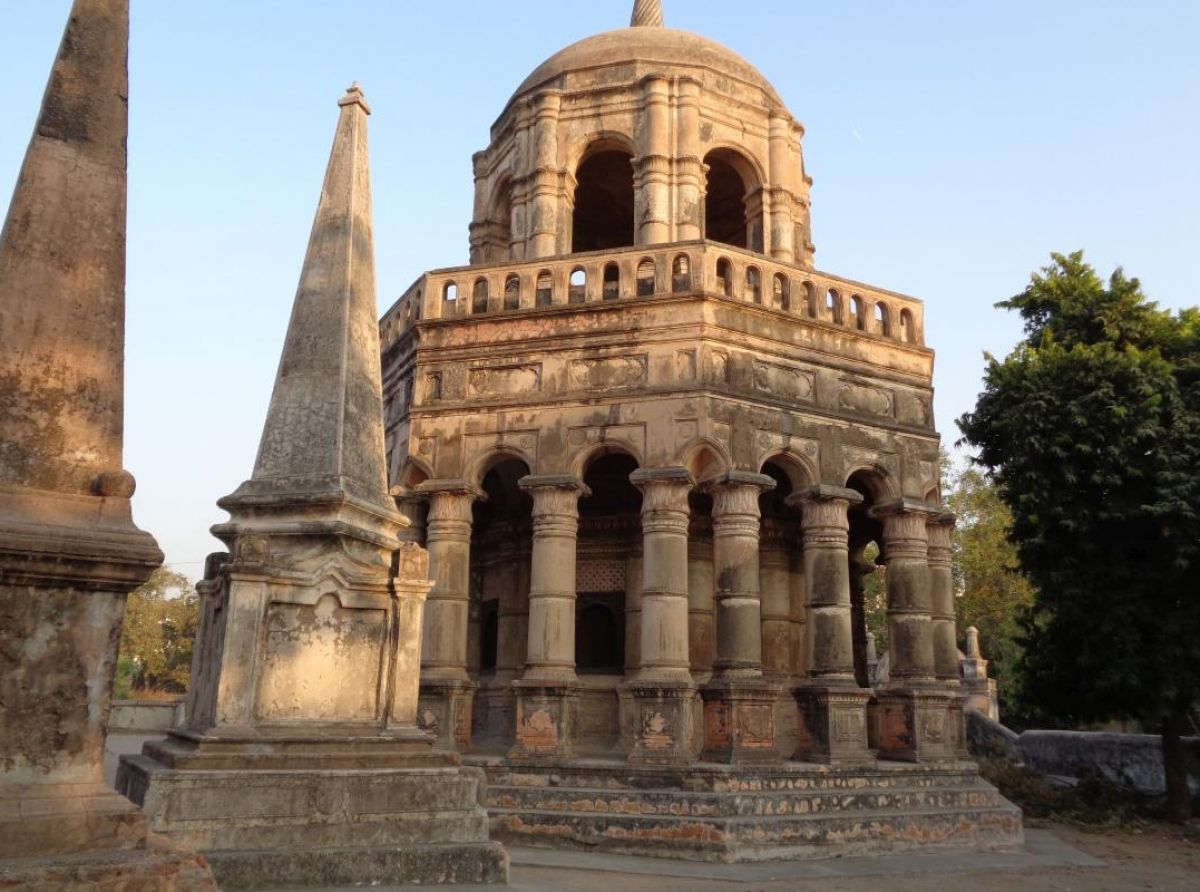
Thesis on Dutch Cemetery in Surat
Indian architect Kaanan Thakkar is currently working on a thesis on the Dutch Cemetery in Surat as part of the Advanced Masters in Conservation of Monuments and Sites at RLICC (KU Leuven), Belgium. Her research includes an internship at the Cultural Heritage Agency of the Netherlands.
Through a specific case scenario of Surat in Gujarat, Kaanan Thakkar wishes to understand the cultural significance of the cemetery in the perceptions of local communities as shared heritage, while also building upon narratives that explain their unique trans-cultural architectural and heritage characters and recommending their possible integration in the local urban landscape as a factor of sustainable development.
As the United Dutch East India Company (Vereenigde Oostindische Compagnie or VOC) established itself in and around Asia, Pieter van den Broecke a Dutch cloth merchant put up a trading post in Surat around 1616. With a factory set up in the city, the trade of textile flourished therein. In support of the trade infrastructure of the VOC, a garden, a warehouse and a cemetery were all that was allowed to be built in the growing city by the river- unlike the case of other VOC trade posts in South of India where forts and settlements were freely constructed. The city of Surat was a part of the Mughal empire at the time, and with written agreements and permissions, the Dutch and the British carried out their trade and always co-existed in constant conflict and competition in the city. The Dutch trade began to see a significant fall in the beginning of 18th century in response to the Anglo-Dutch Treaty.
The Dutch Cemetery in Surat contains several tombs of various size and shapes. The tomb of Baron Adrian Van Reede (1636-1691), who was the Director of the Dutch Company in the Indies, is the most eye-catching. It consists of a double cupola of great size, with a gallery above and below, supported on handsome columns. This monument was formerly ornamented with frescoes, escutcheons, and passages from the Scripture, and the windows were filled with beautiful wood carving. The craftsmanship and the construction, speak the language of the local architecture and replicates the size and grandeur of Mughal imperial tombs in its Indo-Islamic style.
According to Thakkar a holistic safeguarding of the Dutch cemetery can only be justified if it is a true People-Place-Project of heritage conservation. “Through a heritage-led regeneration model a robust scheme of monitoring, finance mechanisms and management structures can then be formed. Although, how these insights and analyses can be used in a plan of action is the more challenging part. And as there will be only one case studied here, we also must know that there is no one-size-fits-all approach to conservation of all heritage sites – tangible and intangible- spread among the urban landscapes of India. This project although, is just the beginning of a larger process in Surat.”
“While the conservation of urban heritage in a complex scenario like Surat is a gradually rising aspect of awareness, the Dutch cemetery in its already existing landmark position can be a powerful agent of change. In further realisation, it would be interesting to know the potentials of the heritage site as a catalyst of sustainable development in a holistic integrated plan. On the other hand, of course, the incredible artistry and confluence of culture in architecture and time through this cemetery is all the more essential to be preserved and maintained for the future. While other traces of Dutch presence in the city have slowly disappeared through time, this cemetery stands to be the lone tangible feature amongst the historic-layered urban landscape of Surat.”
The thesis is expected to be completed in June 2021.
More on Surat and Kaanan Thakar’s project to follow.
- Last updated on .


